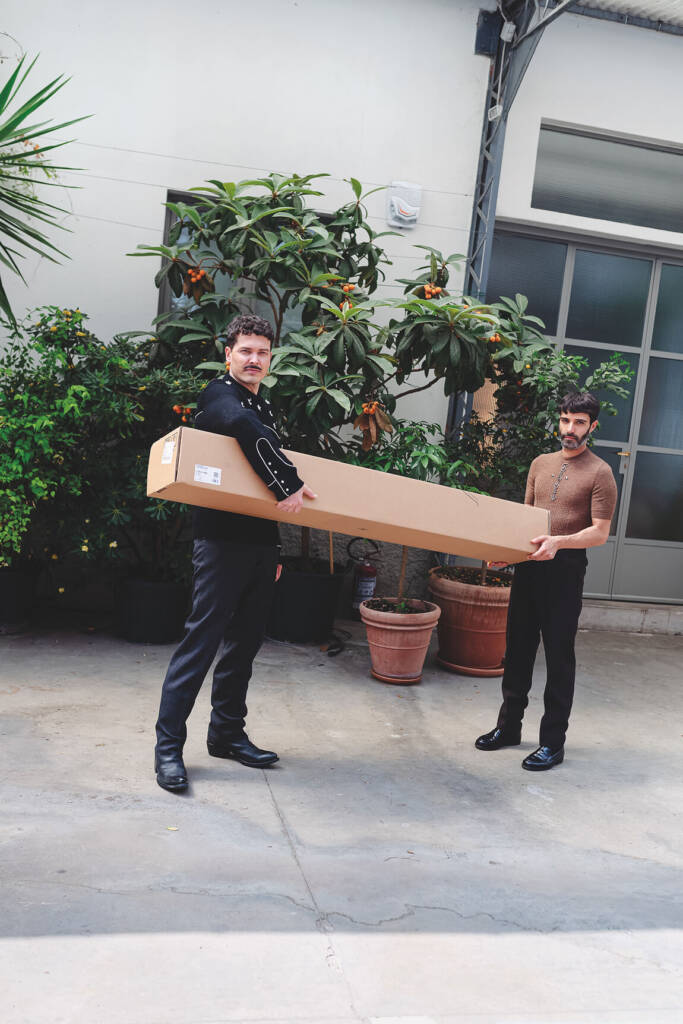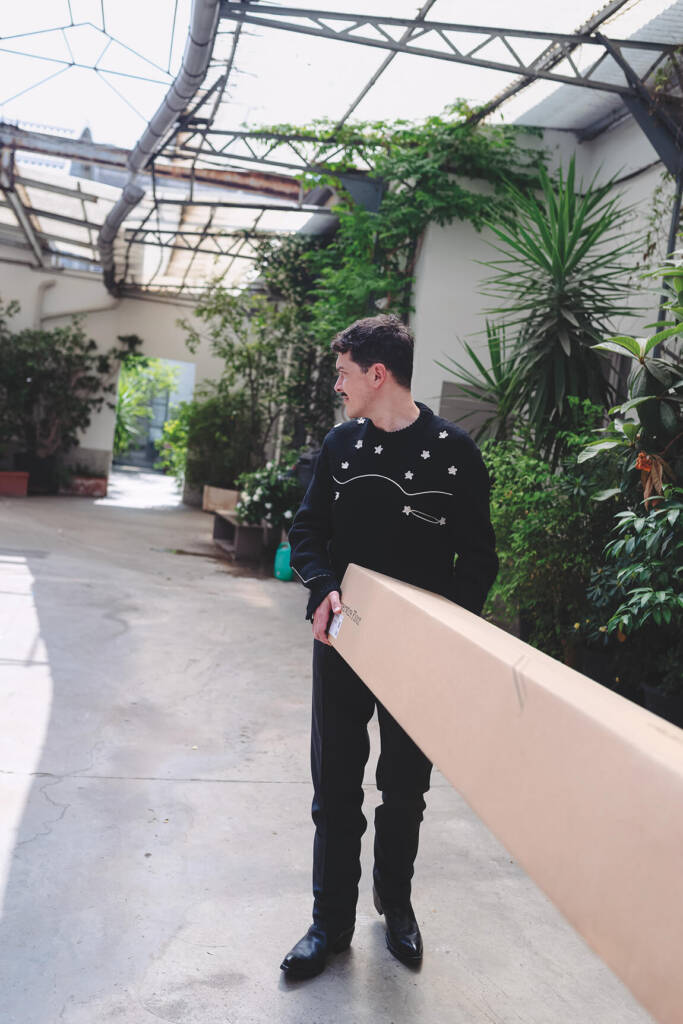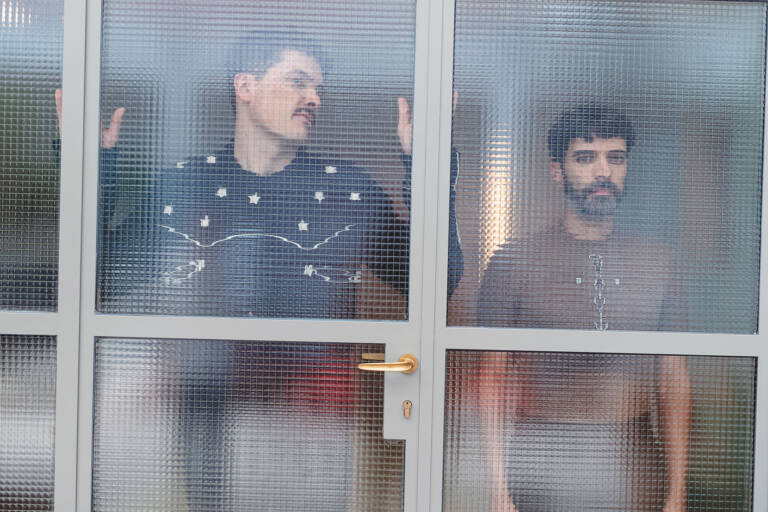
ANDREA: Wool crew-neck sweater with studs, wool trousers, and leather shoes PRADA


Forma translates from Italian as shape, form, figure; fantasma as ghost, phantom, apparition. Formafantasma—the name chosen by Andrea Trimarchi and Simone Farresin when they founded their studio in 2009—captures the inherent tension between what is seen and unseen in the world of design. Labour and extraction, politics and culture, status and wealth—these are the spectres that haunt our objects. Together, Trimarchi and Farresin interrogate these forces, using design not as a tool of simple solutionism or styling but as a means of revelation.
The studio’s research-driven and environmentally oriented practice takes form in objects, spatial design, pedagogy, and exhibitions. In recent years, their work has included Cambio (2020), a solo exhibition commissioned by the Serpentine that explored the ecological and geopolitical aspects of the timber trade; an ongoing collaboration with Prada involving symposia and site specific projects; and direction of the Geo—Design master’s program at Design Academy Eindhoven.
Amid shifting global systems and a corresponding sense of urgency, we sat down with Trimarchi and Farresin to reflect on the role of design—beyond form, beyond function—in a world on the edge of transformation.
hube: What do you find most challenging or intriguing about the relationship between form and function
Formafantasma: The question of form and function is no doubt central to the design discipline, as well as the world beyond it. What we find extremely interesting—and basically always relevant in these questions—is that, from a modernist perspective, function is seen as the primary purpose of design, or practice. On the other hand, every object in the world has multiple functions.
When we refer to a chair or a car, we’re often talking about basic functions, but these objects can also represent status and power. This is extremely interesting—because when you produce an exhibition, an object, or any kind of artistic gesture, you could argue that the outcome of that effort responds to several different functions. So, in this respect, our practice is interested in expanding the idea of functionality, because doing this allows us to investigate form on multiple levels. While there are some who describe our work as being almost in opposition to basic functionality, we don’t think that’s the case.
As artists and designers, you could argue that the most basic function of our work is self-expression—or perhaps responding to the needs of a particular community, whether human or more-than-human. But once that work is released into the world and commercialised, it inevitably takes on another function that is economic. In some cases, the outcome of our work can also represent a form of elitist production.
It’s always relevant to investigate the function of things, because it helps you reflect on the positioning of your own work in the world. In our office, and in our practice, we are constantly busy doing this.

